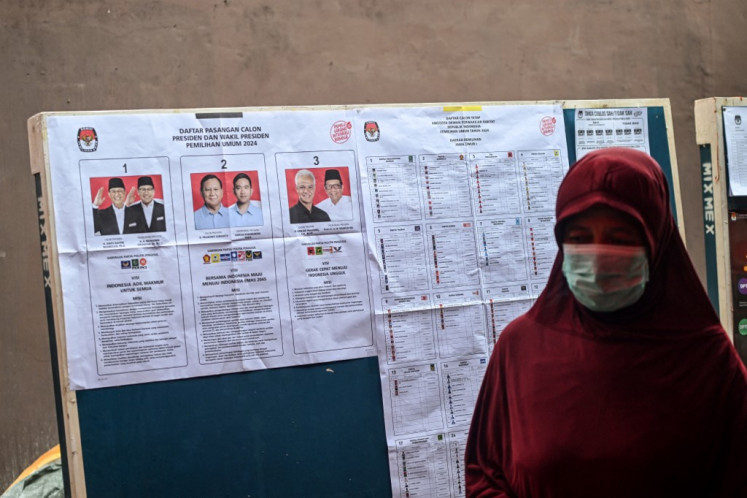Popular Reads
Top Results
Can't find what you're looking for?
View all search resultsPopular Reads
Top Results
Can't find what you're looking for?
View all search resultsGovt questions PLN’s poor planning
The government has questioned a business plan of state electricity firm PLN that it deems improper, particularly the irrational projection of available capacity and peak demand in certain regions across the country
Change text size
Gift Premium Articles
to Anyone
T
he government has questioned a business plan of state electricity firm PLN that it deems improper, particularly the irrational projection of available capacity and peak demand in certain regions across the country.
In its electricity procurement business plan (RUPTL) for the 2017-2026 period, PLN envisions the development of power plants with a total capacity of 77.9 gigawatts (GW).
When realized, the plan will significantly jack up the gap between existing power capacity and peak demand, technically known as electricity reserve margin, within PLN’s whole systems.
For instance, the reserve margin of PLN’s Sumatra system is set to increase from 16 percent this year to 78 percent in 2025, before falling to 70 percent in 2026.
The margin of its northern Sulawesi system is projected to climb to 77 percent in 2020, before stabilizing at 70 percent in 2025 and 2026.
“A reserve margin of around 70 percent is too much. Even 50 percent is already too large for me because the healthy margin is actually only 30 percent,” Deputy Energy and Mineral Resources Minister Arcandra Tahar said over the weekend.
Arcandra was worried that the company would eventually be forced to pay for unnecessary electricity, especially under the take-or-pay clause in its power purchase agreements (PPAs) with various independent power producers (IPPs).
Another irregularity stems from the assumption that its electricity sales volume will annually surge by 8.3 percent, which it factors in the construction of new power plants by 2026.
However, PLN’s sales volume only rose slightly by 3.1 percent in the first nine months of 2017, setting off alarm bells for future excess capacity.
“Let’s say there is an excess capacity of 5 GW and PLN has to pay 7.5 US cents per kilowatt hour [kWh] for such unused electricity under the take-or-pay scheme. How big is the burden PLN should bear annually?” Arcandra said.
“We will work on this matter so that the electricity reserve margin can hover at just around 30 percent.”
The United States-based Institute for Energy Economics and Financial Analysis (IEEFA) has calculated that PLN might have to pay $16.2 billion for idle capacity between 2017 and 2026 in its Java-Bali system alone.
In its current procurement plan, the firm expects to raise its reserve margin of the Java-Bali system to 55 percent in 2019 and 41 percent in 2026 from 27 percent this year.
PLN corporate planning director Syofvi Felienty Roekman previously said it would adjust the electricity growth assumption in its upcoming 2018-2027 procurement plan in a bid to be more realistic.
“It will be lower than the current assumption of 8.3 percent, but still be above the country’s economic growth of 5 percent,” Syofvi added.
PLN has revealed for its Sumatra system, it would revise the projected sales growth to only around 8 percent per year from 11.79 percent per year earlier and postpone the development of several coal-fired power plants on the island.
PLN seems to be caught in a dilemma because it has reached the point of no return in overseeing President Joko “Jokowi” Widodo’s flagship 35 GW program, in which it will build 8.8 GW worth of power facilities on its own, while the remainder will be constructed by IPPs.
As of November, PLN signed engineering, procurement, construction (EPC) contracts and PPAs for 30.45 GW worth of plants under the program that will require an overall investment of Rp 815 trillion ($60 billion).
“Looking at the current situation, PLN should rationalize the 35 GW program by rearranging the development time line of some power plants,” Institute for Essential Services Reform (IESR) executive director Fabby Tumiwa said.
“If the plan remains unchanged, there will likely be an oversupply that threatens PLN’s financial health.”
Over the January-October period, PLN’s net profit plummeted by 72.2 percent year-on-year (yoy) to Rp 3.04 trillion, while its total liabilities surged by 11.2 percent yoy to Rp 429.3 trillion.










